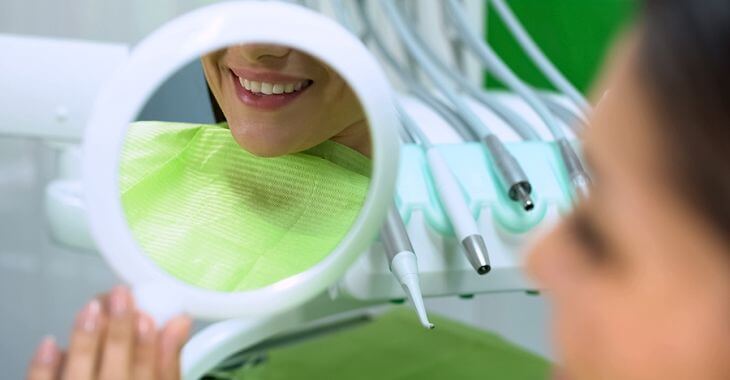What Is a Sealant for Teeth?

One of the biggest threats to the back molars is tooth decay. These large teeth are hard to keep clean, especially for children. To prevent cavities from forming on both baby and adult molars, a sealant for teeth may be recommended. Here is what you need to know about teeth sealants.
The molars in the back of the mouth have many grooves and crevices. These small craters on the surface of the tooth are places where bacteria can hide and thrive. If bacteria are left in these crevices, they will begin creating caries through the tooth enamel, resulting in tooth decay.
What is a sealant for teeth? This procedure is meant to protect molars from decay, adding a layer of thin plastic over the enamel to keep bacteria from causing cavities. There are many patients who can benefit from teeth sealants, a safe and effective option for preventive dental care.
Who Is a Candidate for Teeth Sealant?
A sealants dentist may recommend sealing the back molars for a few reasons. Children are the most common recipients of teeth sealing, since they may not clean their teeth as well as adults. However, there are many people who may benefit from teeth sealants, including:
- Anyone with deep crevices in their molars
- Children who have just received their first or second molars
- Patients who have frequent cavities
- Anyone who has difficulty cleaning their teeth
A sealant for teeth can prevent tooth decay and improve the overall health of the teeth. This is a wise investment for those who are susceptible to tooth decay, preventing tooth damage and more visits to the dentist for tooth fillings and repairs.
How Is Teeth Sealing Performed?
Teeth sealing procedures are quick and painless. First, the teeth are thoroughly cleaned to remove any food debris or bacteria. The teeth are then dried before the sealant is added. The liquid plastic is painted onto the molar’s surfaces, then it hardens quickly as it dries.
A sealant dentist will determine which teeth need to be sealed. Typically, the back molars with the rough surfaces will be sealed, but any tooth can receive sealant. Patients with difficulty brushing or flossing may benefit from all teeth receiving protective sealant.
Is Teeth Sealant Safe?
Teeth sealant is made from plastic that will wear off over time. Some people may wonder if it is safe to ingest teeth sealant, especially since it is made from plastic. There have been no adverse effects reported in studies to dental sealants, which have been used for close to 50 years.
When looking at teeth sealant safety, it is important to consider whether the benefits outweigh the risks. The CDC recommends teeth sealants, as they can reduce the risk of tooth decay by 80% for two years after the treatment and 50% over four years after it is applied.
Tooth decay is well documented to cause oral health problems compared to teeth sealants. Cavities and fillings can weaken the teeth, leading to risks of broken or infected teeth in the future that can jeopardize tooth and oral health.
How Long Do Teeth Sealants Last?
Patients can expect their teeth sealants to last up to 10 years if they maintain their oral health. Routine oral hygiene combined with regular teeth cleanings and dental checkups can extend the lifespan of a sealant for teeth. If sealant is chipped or worn, a sealants dentist can repair it.
What Does a Sealant for Teeth Look Like?
Most teeth sealants are clear or white colored to match the teeth. Since most sealants are applied to the back teeth, it is unlikely that they can be seen when smiling, laughing or talking. The thin layer of plastic is almost invisible and does not change the tooth appearance.
For those with teeth sealants, there is very little difference once the substance is hardened on the teeth. The teeth may feel smoother to the tongue, but sealants should not affect chewing or speech since the layer of plastic is very thin.
When Are Teeth Sealants Applied?
The best way to protect molars is to apply teeth sealant when they first arrive. Primary molars arrive around ages 5-7 – some dentists may suggest adding sealant to these teeth to prevent cavities. The adult molars arrive between ages 11 and 14, which is when most sealants are added.

After 10 years, teeth sealant can be reapplied, but most adults do not need to seal their teeth. With good oral hygiene and regular dental cleanings and checkups, teeth decay can be avoided.
For children, teens and some adults, a sealant for teeth can be beneficial. To learn more about this preventive dental procedure, talk to a sealants dentist about whether it is right for you or your children. It is a safe and cost-effective treatment for preventing tooth decay.
The information provided on this website, including text, graphics, images, and other materials, is intended solely for informational purposes and should not be used as a substitute for professional medical advice, diagnosis, or treatment.




)